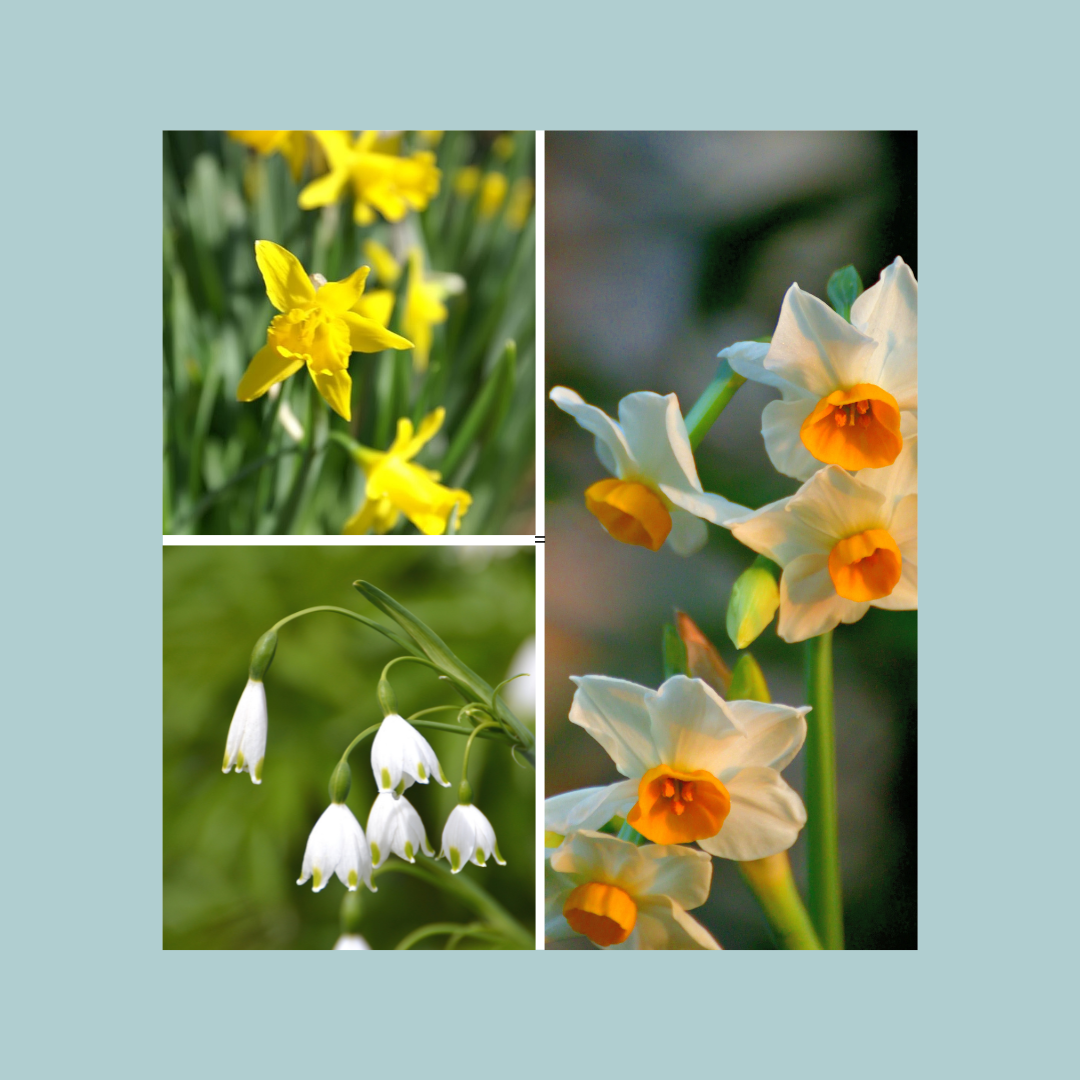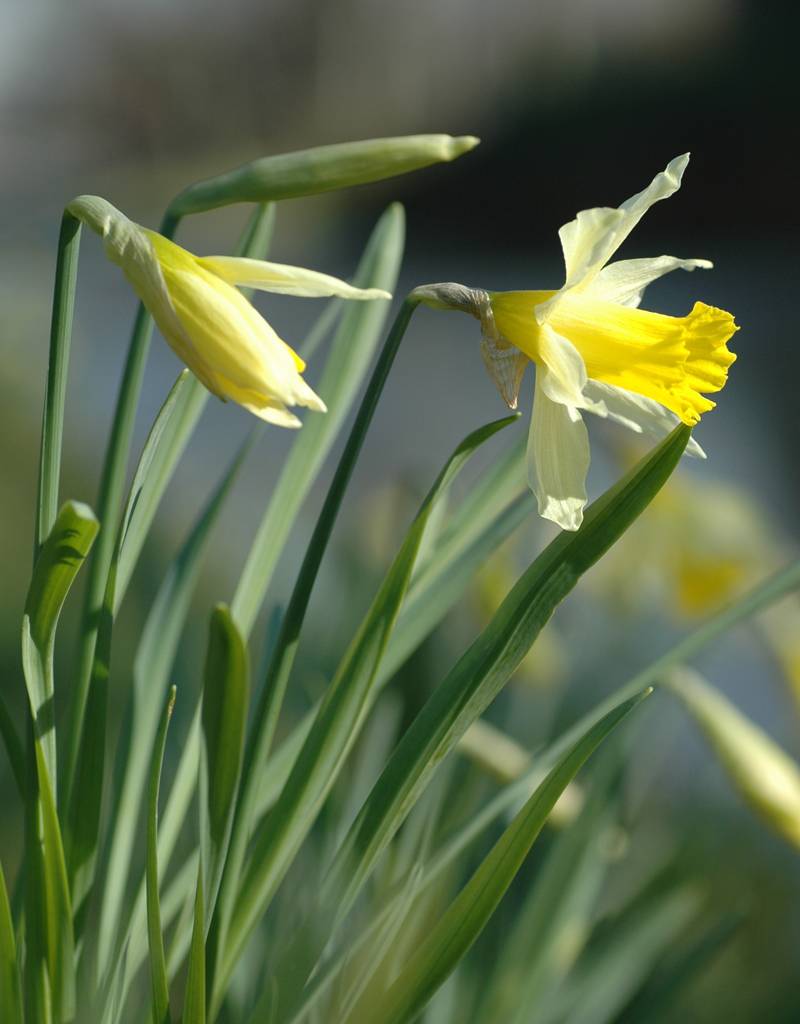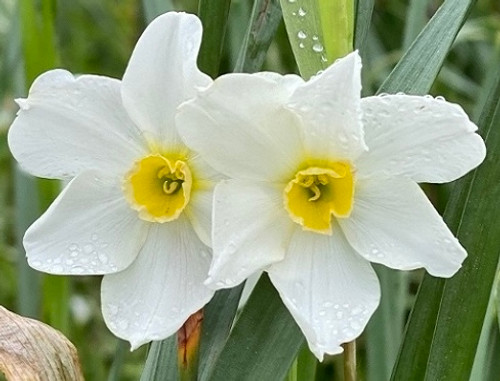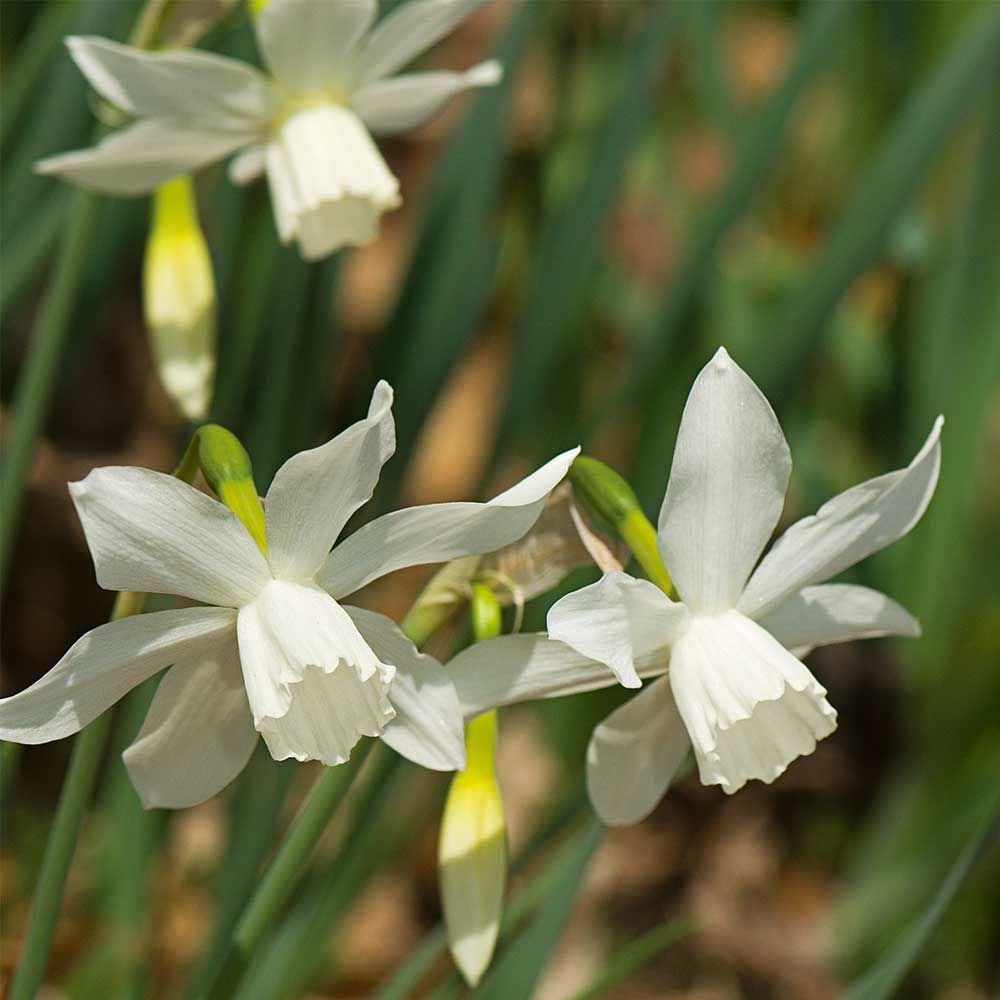Mississippi is an excellent place to garden. Our state has fabulous Agricultural Extension Offices, and it has an active Master Gardening program. In addition, Mississippi has at least two outstanding Facebook Gardening Groups. I check both of those Facebook groups regularly, and I usually learn something when I do. Today, one of Mississippi’s renowned gardeners posted information about the jonquils in our region. I decided that I would further research the varieties that he mentioned, and I found images of each variety. For me, a picture is worth a thousand words.


Snowflakes (Leucojum)
Image Credit: North Carolina State Extension Office
“Snowflakes (Leucojum) have white bells and green dots and are very common pass-along bulbs in the South.” John Rushing Mississippi Gardening Facebook Post – February 16. 2024
Description
“Leucojum is a genus of beautiful woodland perennial bulbs that produce white nodding bell-shaped flowers and vase-shaped clumps of dark grassy leaves. The leaves are erect, about 12 inches long, and 1 inch wide. The flowers are usually 3 to 6 blooms that appear at the top of a hollow flower scape that is about 12 to 15 inches long. Each flower has 6 tepals that have lime-green accents at the tips. The flower bulbs are brown and ovoid.
“There are three species of Leucojum. They include Leucojum auctumnle or Autumn Snowflake which blooms in the late summer and fall. Another species is Leucojum aestivum or Summer Snowflake, which blooms in mid-spring or late April and then goes dormant during the summer. There is also Leucojum vernum or Spring Snowflake that blooms in early spring or mid-March. They are members of the Amaryllidaceae or amaryllis family.
“The genus is native to portions of Europe to Northern Iran. They are found in marshes, wetlands, moist meadows, and thickets,
“The genus name, Leucojum, is derived from the Greek name for a variety of white-flowered plants. The Greek word, leukos, means white and references the color of the blooms.
“The bulbs are easily grown in rich, moist, well-drained soils in full sun to partial shade. During their growing and blooming season, they need consistent moisture, but they will tolerate drier soils during their dormant period. The bulbs should be planted 3 to 4 inches deep and about 4 to 6 inches apart. They are best left undisturbed once planted. Mulching is recommended to keep the soil cool and moist. The bulbs will naturalize over time. After the flowers have finished blooming, it is best to allow the foliage to continue growing until it withers away.
“The summer snowflake is commonly cultivated and is known to naturalize. These plants are commonly confused with Galanthus, but the hollow stems of Leucojum are usually taller and have 3 to 6 blooms. If ingested, the leaves and bulbs of Leucojum are highly poisonous and contain alkaloids known as lycorine and galantamine.
“Leucojum is well-suited for borders, containers, near ponds or streams, and naturalized areas. They are best planted in groups of at least 15 or more bulbs. Large drifts of these white blooms would be beautiful in the landscape, and you will enjoy these flowers for many years to come.”

Paperwhites (Narcissus tazetta)
Image Credit: North Carolina State Extension Office
Height: 31″
“Paperwhites (Narcissus tazetta) typically have multiple very fragrant flowers (while some are yellow, the most common ones are white with white or yellow cups).” John Rushing Mississippi Gardening Facebook Post – February 16. 2024
“The Tazetta are multi-flowered with four to eight flowers per stem. Some have double flowers and also are very fragrant. This division includes the paperwhites, Narcissus papyraceus, that got their popularity here in the 1800s. These are exceptional for forcing indoors as well as naturalizing in the landscape. Daffodil growers I have known are partial to varieties like Golden Dawn, Soliel d’ Or and Grand Monarch.” Norman Winter Mississippi State Extensions Service December 16, 2002

Lent lily (Narcissus pseudo narcissus)
Image Credit: De Warrande
Height: 6″ – 12″
“Lent lily (Narcissus pseudo narcissus) is a very early small daffodil with petals swept back like being windblown; national floral emblem of Wales.” John Rushing Mississippi Gardening Facebook Post – February 16. 2024

Lent Lily – Image Credit: Wikipedia
from Lady Wilkinson’s Weeds and Wild Flowers 1858
The sepals of Lent Lily are pale yellow, and the trumpet is a darker yellow. It is also called the Wild Daffodil.

Twin Sisters
Image Credit: Southern Bulb Compsny
“Two Sisters is the latest blooming heirloom daffodil for Mississippi.” John Rushing Mississippi Gardening Facebook Post – February 16. 2024
Twin Sisters Heirloom Daffoil
Image Credit: White Flower Farm
“Heirloom Daffodils are heritage varieties that have been treasured and passed down from one generation to the next for many years. Generally, these Daffodils are exceptionally hardy, with some plantings known to have lasted well over 100 years.
“The American Daffodil Society refers to these bulbs as “historic” Daffodils, defined as varieties either registered with the Royal Horticultural Society or grown in gardens before 1940.” White Flower Farm

Narcissus jonquila
Image Credit: Wikipedia
“…and tiny but intensely fragrant jonquils (Narcissus jonquila with its very unique narrow, reed-like (“quill” shaped) leaves.” John Rushing Mississippi Gardening Facebook Post – February 27. 2021
“Narcissus jonquilla, commonly known as jonquil[2] or rush daffodil, is a bulbous flowering plant, a species of the genus Narcissus (daffodil) that is native to Spain and Portugal but has now become naturalised in many other regions: France, Italy, Turkey, the former Yugoslavia, Madeira, British Columbia in Canada, Utah, Illinois, Minnesota, Ohio, and the southeastern United States from Texas to Maryland.” Wikipedia
“Difference between different daffodils and snowWHATEVERS
-
Snowflakes (Leucojum) have white bells and green dots and are very common passalong bulbs in the South
-
Snowdrops (Galanthus) have wings and green hearts and grow poorly here if at all.
-
Lily of the valley (Convallaria) is a spreading groundcover with nodding spires of white bells. Grows poorly here if at all.
-
Paperwhites (Narcissus tazetta) typically have multiple very fragrant flowers (while some are yellow, the most common ones are white with white or yellow cups) & have two or more small VERY fragrant yellow flowers and – important – very narrow quill-like leaves (hence the folk name)
-
Lent lily (Narcissus pseudo narcissus) is a very early small daffodil with petals swept back like being windblown; national floral emblem of Wales
-
Two Sisters is the latest blooming heirloom daffodil for Mississippi
-
Double daffodils are often called “scrambled eggs” because their yellow and orange petals are all mixed up
-
There are others (large cup, small cup, split corona, miniatures, and more which I won’t get into here.
John Rushing Mississippi Gardening Facebook Post – February16, 2024
“Three Early Daffodils for Naturalizing (spread on their own)

Image Credit: American Meadows
“The daffodil is an especially rewarding bulb because once planted, there’s little to no work involved for the gardener, yet they can thrive and will multiply for decades. Many of the older tried and tested cultivars of daffodils can bloom for at least 30 years, and even up to 50 years when left to their own devices.
Daffodils are lovely in beds and borders, but when allowed to flourish beyond traditional boundaries, they can highlight the nature that is already there, and will even benefit your property ecologically.” American Meadows
Perennial Daffodils Make Naturalizing Easy
“A naturalized plant is one growing wild in a region where it is not indigenous. Naturalizing is a technique used by gardeners and landscapers to establish plants outside of typical garden beds, encouraging them to multiply and spread.” American Meadows
How to Naturalize Daffodils
“Daffodils“Daffodils prefer sunny locations, although open shade will not prove to be a big detriment. For best naturalization, plant in a well-drained area. Raised beds rich in organic matter are perfect for combining pansies and daffodils.
“Plant bulbs about twice as deep as they are tall, 5 to 6 inches deep for large bulbs and 3 to 5 inches deep for smaller ones. Spacing 6 to 8 inches apart will allow for increasing in size before crowding.
“One mistake many gardeners make in growing daffodils is cutting the foliage after the flowers have diminished. The leaves are vital to next year’s bloom. Leave them growing as long as possible, or at least eight weeks.
“Purchase plump and firm bulbs. If they give to the touch or feel hollow, then make another selection. Azaleas, camellias, redbuds and dogwoods are all enhanced by the addition of daffodils.”
“Two of the most popular divisions that naturalize easily in the South are the Jonquilla and Tazetta. The Jonquilla are the only true Jonquils that are cultivars of the Narcissi Jonquilla. They are multi-flowered with an absolutely wonderful fragrance. Some of the old time favorites are Campernelle, Trevithian, Suzy and Sweetness.
“The Tazetta are multi-flowered with four to eight flowers per stem. Some have double flowers and also are very fragrant. This division includes the paperwhites, Narcissus papyraceus, that got their popularity here in the 1800s. These are exceptional for forcing indoors as well as naturalizing in the landscape. Daffodil growers I have known are partial to varieties like Golden Dawn, Soliel d’ Or and Grand Monarch.
“Double narcissi have one flower per stem with double petals that do not form a distinct cup. For a recent Southern Garden TV segment, we used Tahiti, an unbelievable yellow with fiery orange, and combined them with Delta Fire pansy. In addition to Tahiti, look for Mary Copeland and Cheerfulness.”
By Norman Winter
MSU Horticulturist
Central Mississippi Research & Extension Center
Released: December 16, 2002
